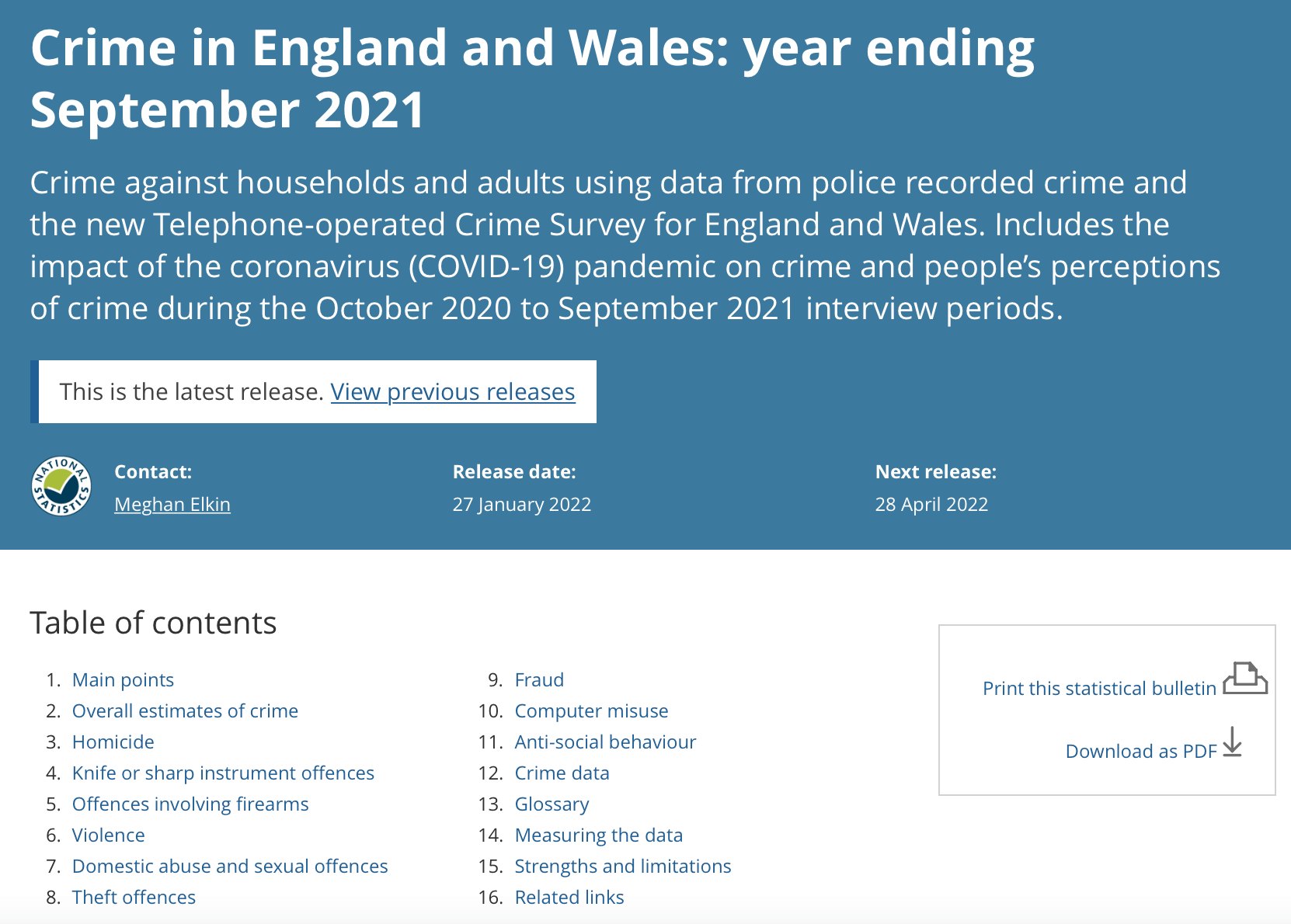
Patterns of crime in the year ending September 2021 have been significantly affected by the coronavirus (COVID-19) pandemic and government restrictions on social contact. There was significant variation in the level of restrictions in place across this time period and, at times, further variation across regions. This creates a challenge in isolating the level of impact that restrictions may have had on patterns of crime.
The number of incidents decreased for many types of crime during periods of national lockdowns. However, police recorded crime data show indications that over the last six months, certain offence types are returning to or exceeding the levels seen before the pandemic. This pattern has not yet emerged in the Telephone-operated Crime Survey for England and Wales (TCSEW)¹ data, possibly reflecting the time lag in recording incidents via the survey.
Fraud and computer misuse offences do not follow the lockdown-related pattern of reduced victimisation, and increases in these offences more than offset the reductions seen for other types of crime.
Overall, Crime Survey for England and Wales (CSEW) estimates provide the best indicator of long-term trends in crime. Estimates from the TCSEW for the year ending September 2021 compared with the pre-coronavirus year ending September 2019² show:
The TCSEW shows little change in total number of incidents of violence but a 27% decrease in the number of victims of violent crime. This is largely driven by falls in violence where the offender was a stranger³, where the number of victims has dropped by 50%, in part reflecting the closure of the night-time economy for several months of the year.
Police recorded crime data give more insight into lower-volume but higher-harm crimes that the survey does not cover or does not capture well. Compared with the year ending September 2020 they show:
Sexual offences recorded by the police were at the highest level recorded within a 12-month period (170,973 offences) in the year ending September 2021, a 12% increase from the same period in 2020. Rape accounted for 37% of these offences and the year ending September 2021 saw the highest recorded annual number of rape offences to date (63,136 offences).
Within these annual figures, the number of recorded sexual and rape offences were lower during periods of lockdown but there have been substantial increases since April 2021. However, caution is needed when interpreting the level of police recorded sexual offences. Changes in the figures may reflect a number of factors including the impact of high-profile cases and campaigns on victims’ willingness to report incidents.
Notes for: Main points
¹ The Telephone-operated Crime Survey for England and Wales (TCSEW) began data collection on 20 May 2020 to capture trends in crime while normal face-to-face interviewing was suspended.
²The year ending September 2019 face-to-face Crime Survey for England and Wales (CSEW) data are the latest that are based on a sample that is independent of the year ending September 2021 Telephone-operated Crime Survey for England and Wales (TCSEW) and allow for comparison over time.
³This is not indicative of levels of domestic abuse during the pandemic. Information on domestic abuse can be found in Section 7.